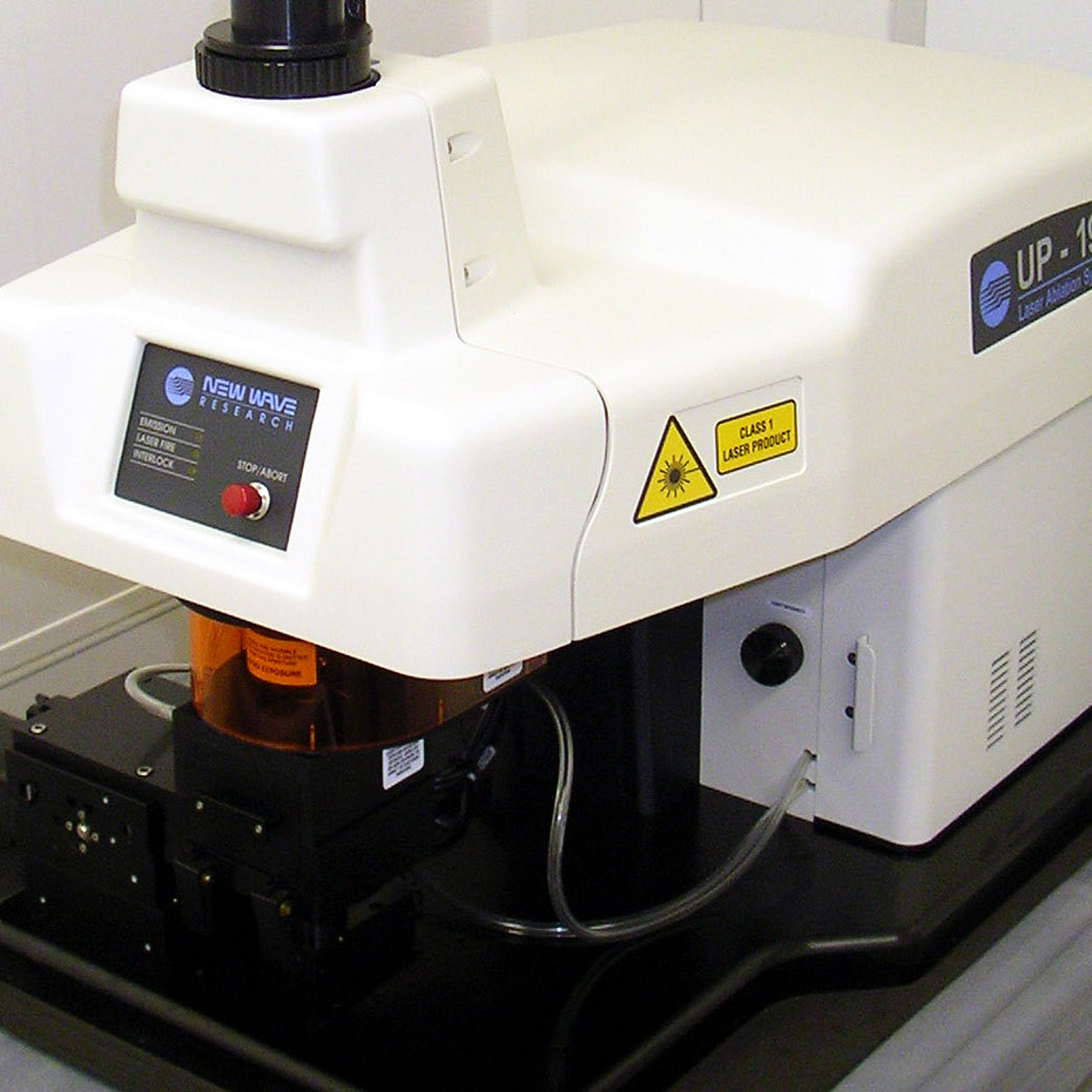...means laser ablation-inductively coupled plasma mass spectrometry.
LA-ICP-MS Laboratory
How it works
Laser-ablation ICP-MS is a method for microchemical (spot) analyses of trace element concentrations and isotope ratios in solid materials. By firing a high-energy laser beam onto the sample surface, material is ablated and thus a hole "drilled" into the sample. The ablated microparticles are removed from the sample chamber by an argon or helium carrier gas, and the aerosol is directly introduced into the hot plasma of an ICP-MS to be analyzed. Elements in concentrations as low as 10 ppb (ng/g) can be analyzed and quantified. See examples
The laser
The UP193ss by NewWave is a solid state laser with a wavelength of 193 nm (deep ultraviolet), a pulse width of circa 3 ns, and an irradiance at the sample of up to 2 GW/cm2. The short wavelength minimizes elemental fractionation at the ablation site and allows for ablation even of colorless minerals such as calcite. Spot sizes can be selected from 10 to 100 microns and pulse rates from 1 to 10 Hz. Samples can be ablated using individual spots, lines/rasters of spots, and continuous lines/rasters. Samples can be illuminated by reflected (coax and ring) as well as transmitted light.
Sample types and preparation
Almost any type of solid can be analyzed by LA-ICP-MS. The samples do not have to be coated or vacuum resistant. Polishing of the sample surface is also not absolutely necessary, although a more precise determination of the measuring point is possible on polished samples. Petrographic thin sections can be analyzed directly, e.g. after analysis of the main elements by microprobe. In our laboratory, silicate and non-silicate minerals, glasses, volcanic glass shards, foraminifera, otoliths, statoliths, bivalve shells and others have been analyzed so far.
The normal sample chamber has a usable diameter of 45 mm, limiting the maximum sample size. Specimens can be mounted in a variety of ways. Ideally, samples are in the form of a 1-inch mount (25 mm diameter, 5 to 20 mm height), petrographic thin section (28 x 48 mm maximum), or fragments < 3 mm in height.
Calibration and data reduction
For the determination of element concentrations, an element of known concentration (internal standard) must be measured together with the elements to be analyzed both in the sample and in the calibration standard. Often 43Ca or 29Si is taken for this purpose, the concentration of which was previously determined by means of electron beam microprobe or stoichiometric calculation. For calibration we use synthetic glasses containing trace elements (NIST610, NIST612), synthetic glasses from natural rocks (MPI-DING glasses, Jochumet al. 2000; USGS glasses BCR-2G, BIR-1G, and BHVO-2G), pressed pellets of carbonates, and others. Data quantification is performed using both GeoProTM and GlitterTM software.

